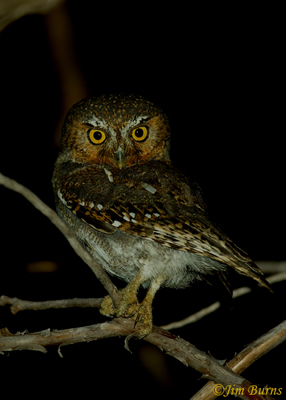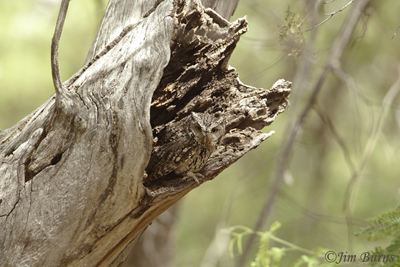
This all came up recently when I received an inquiry to check my photo files for images of owls in which the subject appeared “shrouded, veiled, or obscured.” I complimented the editor for her use of those three synonyms, telling her they defined the very essence of what owls are, what they do, and what they represent in the human psyche. If you’ve ever flushed a screeching Barn Owl from an unseen perch in total darkness or listened for Flammies’ muffled hoots in a still, moonlit forest, you’ll know exactly what I meant.
Long before owls became the focus and fulfillment of birdwatchers’ daydreams, they populated the nightmares of our ancestral indigenous peoples. For some they were the harbinger of death, for others the repository of wisdom, yet even in the latter case omen and sorcery were certainly ascribed. I know of what I speak for an Eastern Screech-Owl visited my dying mother’s windowsill one evening during the week before her death. Owls can bring even the most rational among us to the cusp of portent and prophecy.
“Shrouded” indeed. Most of our nineteen North American owl species inhabit the night, and those that don’t are crepuscular, operating along the edges of last light just as they work along the margins of our imagination. And if this alone were not enough to conjure some foreboding and dread as we seek them, by daylight their cryptic coloration veils and obscures them as they sleep, concealed from birders and mobbing passerines alike, by occluding foliage or the camouflage of their tree cavities.
For me as a birder the most prescient aspect of the owl mystique has been this: I never find owls when I am looking for them, yet they unexpctedly appear when I am not. I was once with a handful of the best birders I know searching for a Northern Saw-whet reported in a copse of trees the size of an urban backyard. For two hours every one of us glassed every tree, unavailingly. Pausing to kneel and retie a bootlace, as I stood I saw the owl near the trunk of a pine, partially obscured by needles. Do owls smirk?
It is my long held belief that owls define who we are as a species. They are a metaphor for the natural world and for life itself. Many of us, perhaps birders more than most, are seeking answers. Answers we may not be sure we want to find. Answers we may not understand . . . or want to understand. For me the questions have always seemed more important than the answers. The questions define our humanity and our relationship to our planet, and owls beg the questions.
Contrary to what you may be thinking, I did not celebrate last Tuesday night in an owl costume. I dressed up as a birder, turned off the lights, and went out into the desert hoping to recreate a magical image a friend of mine captured a few years ago, a Great Horned Owl silhouetted against a gibbous moon. It seemed appropriate for the season but, just as I (and you) suspected, I neither saw nor heard an owl of any kind. But the sounds of the night dark desert made my skin crawl, and I knew I was alive.